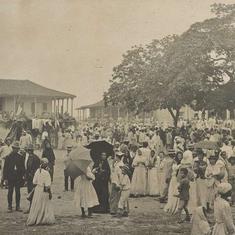In early August 1969, the chief minister of Tamil Nadu, M Karunanidhi, penned an enthusiastic missive to the prime minister. “I emphatically welcome this bold step of yours,” he wrote, “which is perhaps the most significant in the last 20 years of the history of independent India.” Two weeks earlier, Indira Gandhi had promulgated an ordinance nationalising fourteen private banks. More than three decades on, Karunanidhi’s judgment would be echoed by the official historians of the Reserve Bank of India (RBI), who wrote: “It remains, without doubt, the single most important economic decision taken by any government since 1947. Not even the reforms of 1991 are comparable in their consequences – political, social and, of course, economic.”
These verdicts sit awkwardly with much of the writing on Indira Gandhi’s decision to nationalise the banks – a decision that is rightly seen as driven by political considerations. However, in focusing all but exclusively on the intention behind nationalisation of banks, we risk occluding its historical significance. To get the measure of this, we need to plumb the consequences that flowed from this decision.
Bank nationalisation tremendously enhanced the “infrastructural power” of the Indian state: its ability at once to syringe resources out of the society and to pursue policies aimed at securing the society. These were enabled by constructing a novel fiscal-monetary apparatus and grafting it to the focus on targeted alleviation of poverty. In the short run, it also cemented the prime minister’s power vis-à-vis her party and considerably advanced her Caesarist mode of politics. Finally, when the economic temperature began to soar, it enabled her government to adopt difficult measures and showcase the muscle of the executive.
Let’s start with the construction of what has aptly been described as the “fiscal-monetary machine.” Bank nationalisation led to a major expansion of the banking network, especially in rural India. By incentivising people to deposit their money, these bank branches soaked up the savings of a large section of society that had hitherto lain out of the formal banking system. A significant portion of these deposits was siphoned away by the government – by getting the banks to purchase government bonds. In any system, banks will hold some government securities, for these are risk-free sovereign-guaranteed assets. In the Indian case, the government cornered a big chunk of the sector’s resources by legally mandating banks to hold a specified quantum of their assets – calculated as a ratio of their total deposits – in government bonds. In effect, this “Statutory Liquidity Ratio” (SLR) specified the amount of money banks had to lend to the government. Furthermore, banks were required legally to deposit a certain amount of cash, which earned no interest, with the RBI – the “Cash Reserve Ratio” (CRR). This enabled the government to borrow more from the RBI.
By steadily hiking the SLR and the CRR, the government was able to borrow an increasing proportion of the monetary system’s resources and deploy it for fiscal requirements, especially for agricultural subsidies and poverty reduction programs. The SLR went from 25 per cent in July 1969 to 36 per cent in September 1985, and the CRR from 3 per cent to 9 per cent over the same period. By the end of the long 1970s, the banks and the RBI together held 67 per cent of government securities. If we include the state-owned Life Insurance Corporation’s holdings, then the nationalised financial sector accounted for a whopping 78 per cent of government debt.
At the same time, the government used the nationalised banking system to lend to poorer sections of Indian society, whose “credit worthiness” would have deterred most commercial banks. In so doing, the government effectively forced the banks to pursue its agenda of poverty reduction. Between 1969 and 1990, bank branches were opened in some 30,000 rural locations that had no financial or banking institutions. Rural lending rates were kept lower than urban rates; savings rates worked in the opposite direction. By 1990, rural households were getting almost a third of their credit from the nationalised banks. Over this period, bank expansion, savings mobilisation, and provision of credit significantly influenced growth in per capita output and poverty reduction in rural India.
There were, of course, limits to how far this fiscal-monetary machine could travel. For one thing, the massive “preemption” of the banking sector’s resources by the government choked the flow of credit to other commercial and industrial requirements. For another, the requirements of lending to the government and poorer segments of society reduced the profitability of the banks. For a third, it enveloped the central bank in a double bind. On the one hand, the government’s mounting borrowing requirements compelled the RBI to lend to it directly. This expanded the RBI’s balance sheet with a multiplier effect down the banking system and the consequent risk of inflation. On the other hand, the RBI’s freedom to wield its main monetary policy tool – interest rates – was abridged. All said, in the long 1970s this system did not run out of steam; though the ride was anything but smooth.
This fiscal-monetary apparatus did not spring fully formed from anyone’s forehead. Policymakers and bureaucrats, economists and bankers felt their way towards constructing and tinkering, regulating and fine-tuning it. At the moment of bank nationalisation, the government had no clear ideas of what it wanted to accomplish. The discussions since 1967 on “social control of banking” had hardly moved beyond windy expressions of intent. A lengthy note prepared for the prime minister had merely underlined the need for “more intensive home work” on “equitable allocation and efficient use” of bank deposits and resources. Unfortunately, the assignment had no takers because it was regarded as political hot air.
Nor did the idea of nationalisation have much traction in the bureaucracy and the banking system. The then secretary to the prime minister, LK Jha, told her that “it would be difficult to argue that nationalisation of the banking system is necessary to increase public control over private banks.” Contrary to the claims of the left-leaning “Young Turks” in the Congress party, nationalisation would not reduce the flow of credit to big businesses: “One could as well ask why is it that the Railways, which are State-owned, carry such a high proportion of freight which emanates from the bigger industrial groups.” The government, he argued, had adequate control over the financial system to channel industrial and agricultural credit. Two months later, Jha was appointed as the governor of the RBI. When Indira Gandhi decided to take the plunge, Governor Jha was kept out of the loop until the last minute – owing to his dislike of the idea. The speed and secrecy with which the move was executed ensured that no expert, barring IG Patel in the finance ministry, was consulted. When the announcement was made on 20 July 1969, the government – like the dog that caught the car – had to quickly decide what to do next.
The immediate concern was to deal with the organisational changes necessitated by this move. Thereafter, the legal challenge to bank nationalisation in the Supreme Court consumed substantial energies of the government. Yet the prime minister knew from the outset that she needed expert knowledge and policy advice. Among those to whom she first turned was the chairman of the Syndicate Bank, TA Pai. A progressive banker from Manipal in Karnataka, Pai’s thoughts proved influential in shaping the discourse on the fiscal-monetary apparatus. Not surprisingly, Pai would later join the Congress party and serve in Indira Gandhi’s third cabinet.
Pai suggested two principal objectives for the nationalised banking system: broadening the base of banking and paying attention to neglected sectors. India had hardly 12 million bank accounts for a population of 500 million. The challenge was “to convert a system of class banking into banking for the masses.” The banks had total deposits of Rs. 43 billion, when, by international standards, the deposits should have stood at least at Rs. 120 billion. Worse, half of the existing deposits came from just three states: Maharashtra, Gujarat, and West Bengal. By contrast, six states accounting for 40 per cent of the population – Jammu and Kashmir, Madhya Pradesh, Rajasthan, Bihar, Orissa, and Assam– contributed a paltry 6 per cent of the deposits. “It is imperative therefore that banking should spread more intensively in all these states.”
Conversely, the Indian banking system had only 1.8 million borrowing accounts. Syndicate Bank had the highest, with 180,000 accounts, while the State Bank of India, with 10 times the loans, had only 122,000 borrowing accounts. “This shows that the banks are catering only to a few in the country and when we know that nearly 600 accounts have borrowed 50 per cent of the total advances, viz. Rs 15 billion we can appreciate the tragedy of the situation.” Bank credit, he argued, could “act as a potential catalytic in the economic growth of the people.” The new system should have clear priorities, such as small-scale industry, retail trade, self-employed professionals, students, and agriculture. Bank finance, he wrote, “must make even subsistence farmers into surplus farmers.” Instead of aiming at annual increases in credit to agriculture and industry, targets should be linked to “the total advances as a percentage to be achieved within a reasonable period.”
In the days after the nationalisation, the bureaucracy was humming with rumours of Governor Jha’s imminent resignation. Indira Gandhi requested him to stay in the saddle: “I shall need to rely a great deal on you … It should be possible for you to pick out the priority areas for action . . . so that we can give the people the feeling that the nationalisation of banks will affect their lives in some concrete way.” Jha promptly sent her two detailed notes. The governor observed that “concern for the underprivileged sections of the community and the desirability of improving their access to credit facilities can be said to be one of the prime objectives of nationalisation.” He listed several “areas for special attention”: “small scale industries, retail trade, specially in the rural areas, individuals who operate their own trucks or autorickshaws on hire … the self-employed generally. Artisans like carpenters and tailors, people who run service and repair establishments.” In short, the more productive segments of the emerging informal economy. Further, with the advent of the Green Revolution, there was “a much greater need for credit for the farmer both for his inputs and for his marketing.” The nationalised banks should adopt “a rationalised programme of branch expansion … paying special attention to those States and those parts of the country which have so far been neglected.”
Having focused on constructing the capillaries of the new apparatus and on enabling the flow of credit to poorer sections, Jha turned to the apex and its requirements. Banks were required by law to maintain 25 per cent of their deposits in government securities (the Statutory Liquidity Ratio) and 3 per cent of their deposits as cash (Cash Reserve Ratio) with the RBI. “After nationalisation,” he wrote, “a progressive step up in the investment of the banking system in Government securities will be undertaken to bring the level of investment around 30 per cent and this can be achieved without any change in the law.” The governor had put his finger on an open sesame. But he would rapidly be disabused of his hope for a gradual increase and a moderate ceiling. Within months, the government escalated the SLR and CRR rather close to Jha’s 30 per cent. By the mid-1980s, they added up to 67 per cent.

Excerpted with permission from Indira Gandhi and the Years That Transformed India, Srinath Raghavan, Penguin India.










